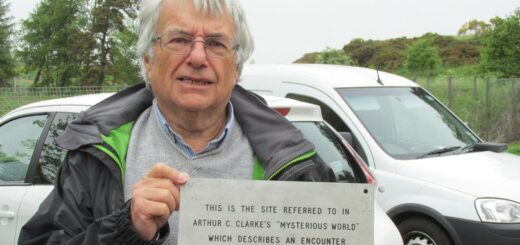Our Milky Way Is Getting Bigger, New Study Shows

The galaxy we inhabit, the Milky Way, may be getting even bigger, according to recent astronomical research.
Researchers calculated that galaxies like the Milky Way are growing at around 500 meters per second, fast enough to cover the distance from Liverpool to London in about twelve minutes.
“The Milky Way is pretty big already. But our work shows that at least the visible part of it is slowly increasing in size, as stars form on the galactic outskirts,” said Cristina Martínez-Lombilla, a PhD candidate at the Instituto de Astrofísica de Canarias in Tenerife, Spain.
“It won’t be quick, but if you could travel forward in time and look at the galaxy in 3 billion years’ time it would be about 5% bigger than today.”
Astronomers set out to establish whether other spiral galaxies similar to the Milky Way really are getting bigger, and if so what this means for our own galaxy. Martínez-Lombilla and her team used the ground-based SDSS telescope for optical data, and the two space telescopes GALEX and Spitzer for near-UV and near-infrared data respectively, to look in detail at the colors and the motions of the stars at the end of the disc found in the other galaxies.
The researchers measured the light in these regions, predominantly originating from young blue stars, and measured their vertical movement (up and down from the disc) of the stars to work out how long it will take them to move away from their birthplaces, and how their host galaxies were growing in size.
This slow growth may be moot in the distant future. The Milky Way is predicted to collide with the neighbouring Andromeda Galaxy in about 4 billion years, and the shape of both will then change radically as they merge.
Research will be presented on Tuesday 3 April, 2018 at the European Week of Astronomy and Space Science in Liverpool.



 Creators of mankind
Creators of mankind Description of “Tall white aliens”
Description of “Tall white aliens” Where they came from?
Where they came from? About hostile civilizations
About hostile civilizations The war for the Earth
The war for the Earth “Tall white aliens” about eternal life
“Tall white aliens” about eternal life Video: “Nordic aliens”
Video: “Nordic aliens” Aliens
Aliens Alien encounters
Alien encounters The aliens base
The aliens base UFO
UFO Technology UFO
Technology UFO Underground civilization
Underground civilization Ancient alien artifacts
Ancient alien artifacts Military and UFO
Military and UFO Mysteries and hypotheses
Mysteries and hypotheses Scientific facts
Scientific facts


















